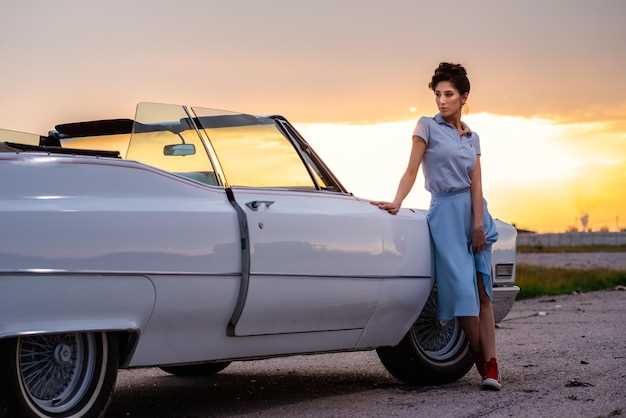
For many automotive enthusiasts, owning a classic car is a dream that encapsulates nostalgia and pride. This guide aims to equip you with the essential knowledge needed to navigate the thrilling yet complex journey of purchasing your first classic car. Classic cars hold not only historical value but also represent a unique avenue for personal expression.
Before diving into the buying process, it’s important to understand what defines a classic car. Generally, vehicles that are over 20 years old yet are still in demand and maintain their appeal qualify as classics. This guide will help you identify the right model for you, whether it’s a vintage muscle car or a timeless convertible.
Throughout this guide, you will learn about critical factors such as setting a realistic budget, researching different models, and understanding the significance of vehicle history. By arming yourself with this knowledge, you’ll be in a stronger position to make an informed and satisfying purchase, ensuring that your dream of owning a classic car becomes a reality.
Assessing Your Budget and Financing Options

When it comes to buying your first classic car, understanding your budget is crucial. Before you start browsing listings or attending car shows, determine how much you can comfortably spend. Consider not just the purchase price but also additional costs such as taxes, insurance, maintenance, and potential restoration work.
Begin by setting a realistic budget. Factor in all associated costs, which can vary widely depending on the vehicle’s condition, rarity, and age. For classic cars, it’s essential to allocate funds for ongoing maintenance, as the upkeep for older models might exceed that of contemporary vehicles. Research common issues particular to the model you’re considering, as this can help you estimate future expenses.
Next, explore your financing options. If you’re not paying in cash, investigate classic car loans, which are specifically designed to finance the purchase of vintage and classic automobiles. These loans often offer competitive rates and terms. Additionally, some banks and credit unions provide specialized financing for classic cars, so don’t hesitate to ask about these options.
Another alternative is to look into personal loans or even home equity lines of credit if you own a home. However, be cautious with these options, as they may come with higher interest rates and risks. Assess your financial situation carefully to ensure that taking on debt for a classic car won’t jeopardize your financial health.
Before making a decision, it may be wise to consult with financial advisors who have experience in classic car investments. They can guide you in crafting a suitable plan that aligns with your financial goals. Remember, the key to a successful classic car purchase is to remain within your financial limits while still pursuing your passion for classic automobiles.
Researching Classic Car Models and Market Values

Purchasing a classic car involves more than just falling in love with its design; it requires thorough research into various models and their market values. A solid understanding of the classic car landscape will help you make an informed decision and ensure you get the best deal possible.
Start by identifying which classic car models capture your interest. Consider factors such as the car’s historical significance, performance specifications, and the availability of parts for maintenance and restoration. Popular models from iconic brands often have a dedicated following, which can affect their value and desirability in the market.
Next, it’s crucial to assess the current market values of your chosen models. This can be done by consulting classic car valuation guides, online marketplaces, and auction results. Websites dedicated to classic cars typically provide insights into pricing trends, allowing you to gauge whether a specific model is appreciating or depreciating in value.
Joining online forums or local classic car clubs can also be beneficial. Engaging with seasoned collectors can offer firsthand knowledge regarding past purchases, rare model attributes, and real-world market dynamics. They may also share tips on negotiating and finding the best opportunities.
Don’t forget to factor in additional costs associated with ownership, including insurance, restoration, and maintenance. This comprehensive approach will equip you with the necessary tools to make a wise buying decision, ensuring that your classic car journey starts on the right track.
Evaluating Condition and Conducting Inspections
When buying a classic car, thoroughly evaluating its condition is crucial. Start with a comprehensive visual inspection. Look for rust, dents, and paint irregularities on the body. Pay special attention to the undercarriage, as this area often experiences corrosion that can compromise the vehicle’s integrity.
Next, examine the engine compartment. Check for signs of leaks, frayed hoses, and worn belts. A well-maintained engine should be clean and free of excessive oil residue. Additionally, inspect the electrical system, including the battery, wiring, and lights, as older vehicles may have outdated components that require replacement.
Move to the interior, assessing the condition of the seats, dashboard, and upholstery. Look for cracks in the dashboard and signs of wear on the seats. Ensure that all interior components, such as the radio, air conditioning, and power windows, are functioning properly. Documentation of past maintenance can also provide insight into the car’s history and upkeep.
Conduct a road test to evaluate the car’s performance. Listen for any unusual noises during acceleration and braking. Test the steering and suspension for responsiveness. Ensure the brakes function effectively without pulling to one side, indicating alignment or brake issues.
If possible, consider hiring a professional mechanic who specializes in classic cars. They can provide an expert opinion and identify potential problems that a novice may overlook. A thorough inspection will help you make an informed decision before buying your classic car.




